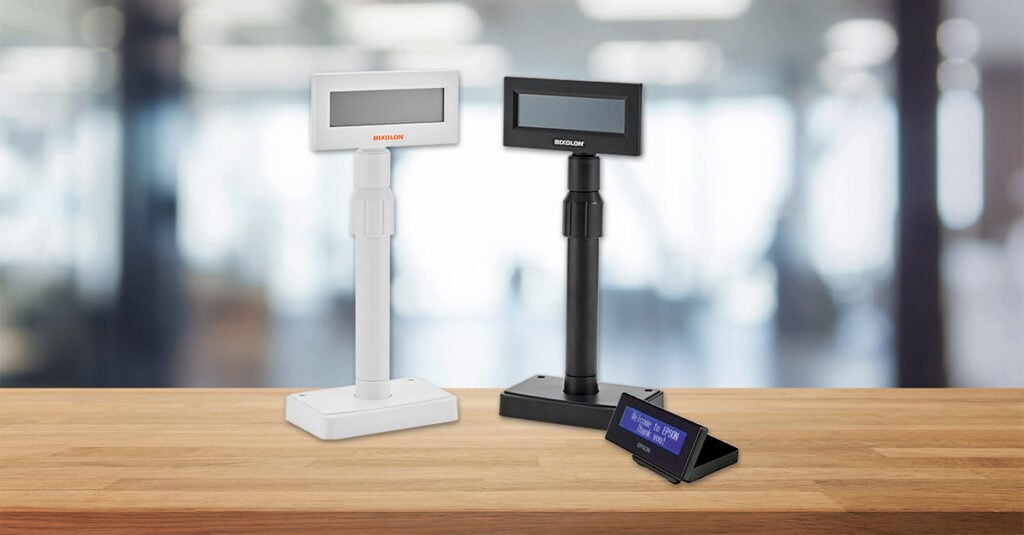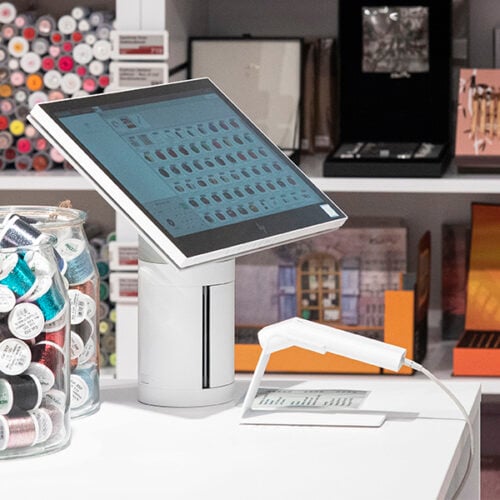Improving the customer experience
Customer displays
Part of a POS system
Valuable part of the retail environment
Customer displays
The customer display can be part of a point-of-sale (POS) system and can be integrated with the POS terminal or other business applications to display real-time information. It can be a traditional LCD or LED screen, a touchscreen or even a smaller device with a simple customer display such as price displays.

A customer display is especially important in a self-service solution. Here, a customer display allows you to share relevant information with customers, such as prices, product descriptions, offers and other important details. This helps guide customers through the buying process and gives them the information they need to make informed decisions.
Several types of customer displays
Different types of customer displays
Traditional LCD or LED screens: These are standard screens that display text, images and videos and are suitable for displaying advertisements, product information and prices.
Touch screens: These screens allow customers to interact directly with the display by touching the screen. They can be used to select products, navigate through menus and even make purchases. An interactive customer display allows customers to interact directly with the system, select products, make payments and possibly even customize their orders as needed. This creates a more engaging and customized buying experience.
Price displays: These are simple displays that show product prices and can be electronic or manual. They are typically mounted directly on the shelves and are often used to display prices of goods in supermarkets or larger retail stores.
In-store displays: These are larger screens placed around the store and are used to display advertisements, product recommendations, promotions and other information that can influence customers’ purchasing decisions.
See also our
Related solutions
Enter a world of diverse and customized solutions where problems are met with innovation and variety. Our related solutions open the door to a landscape of possibilities that go beyond the conventional. From adaptations of existing technologies to cutting-edge approaches built on creativity and multidisciplinary methodologies, our focus is on providing tailored answers to complex needs. Welcome to a world of variety where solutions are not just found, but created with care and insight.
WANT TO KNOW MORE ABOUT THIS SOLUTION?
Contact us here:
Strengthen your business with Delfi Technologies
Contact us today and we will get back to you.


